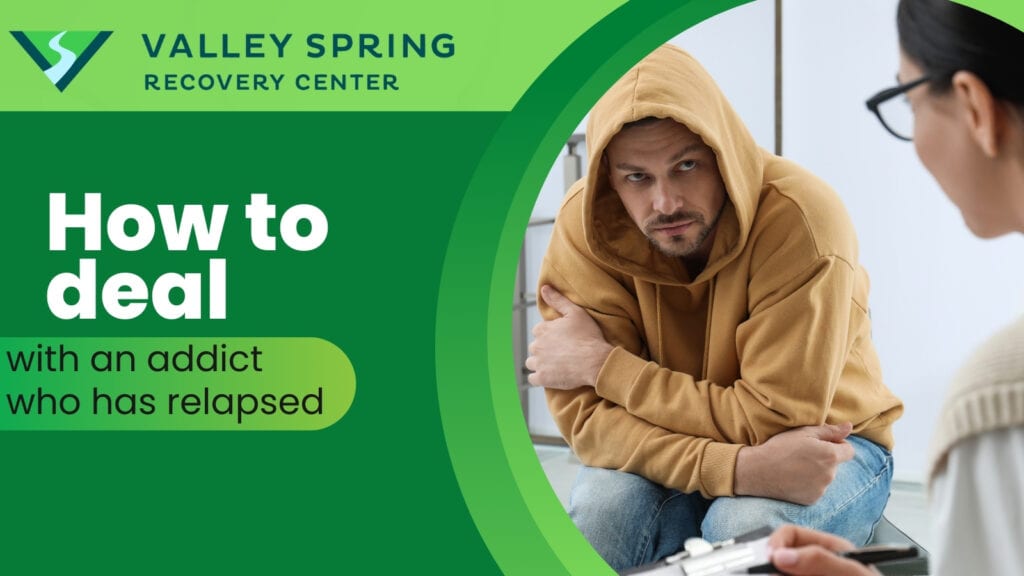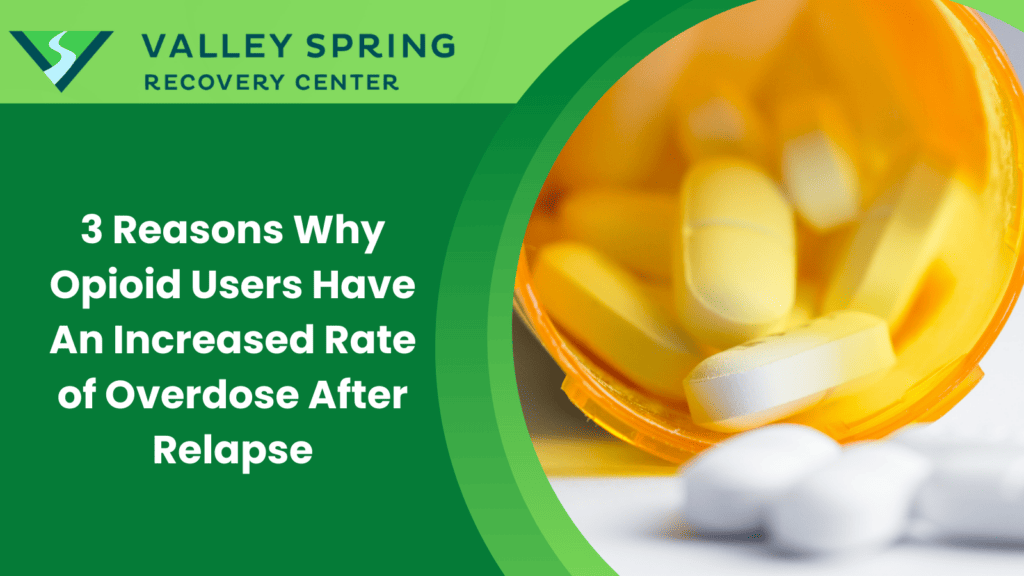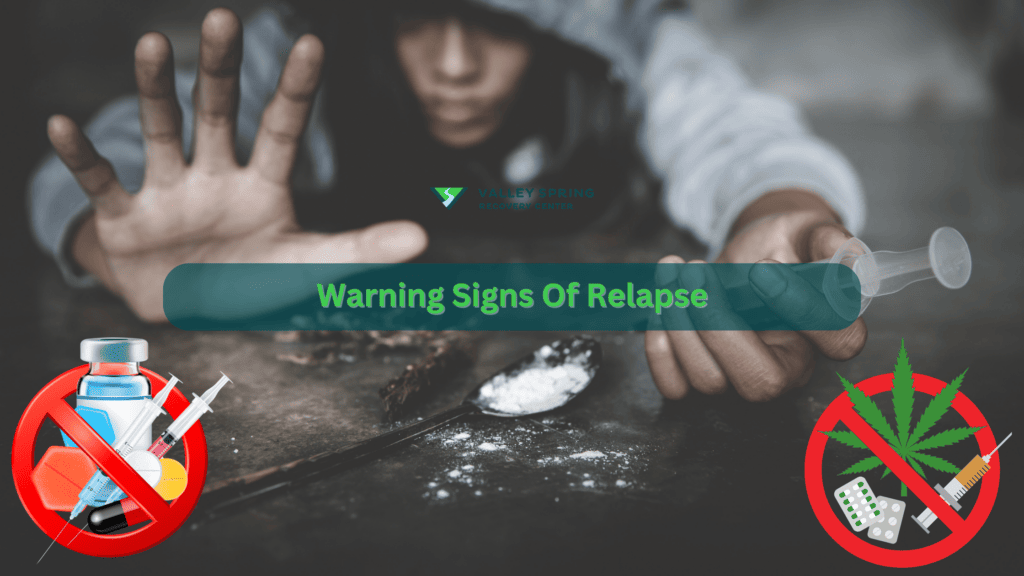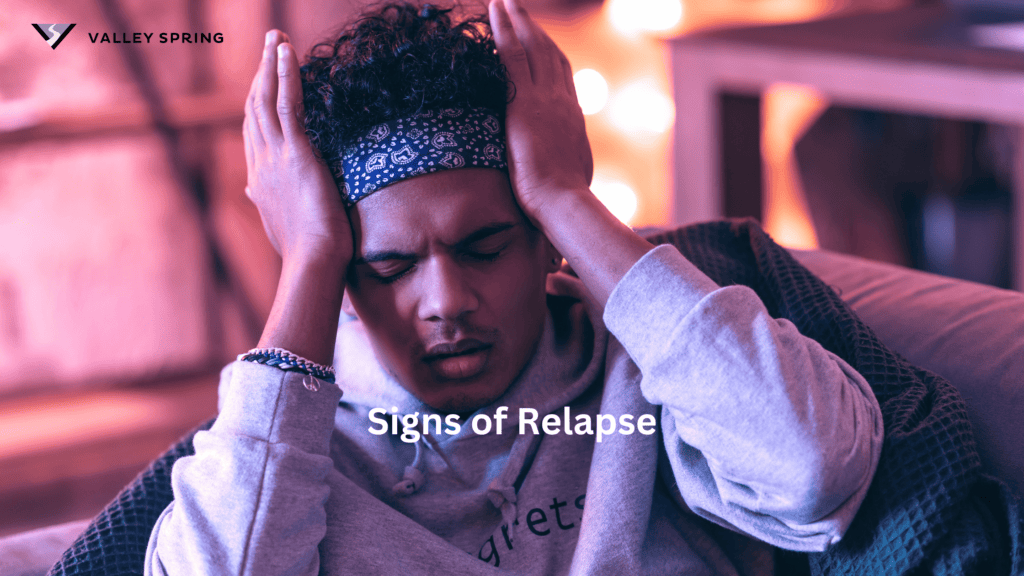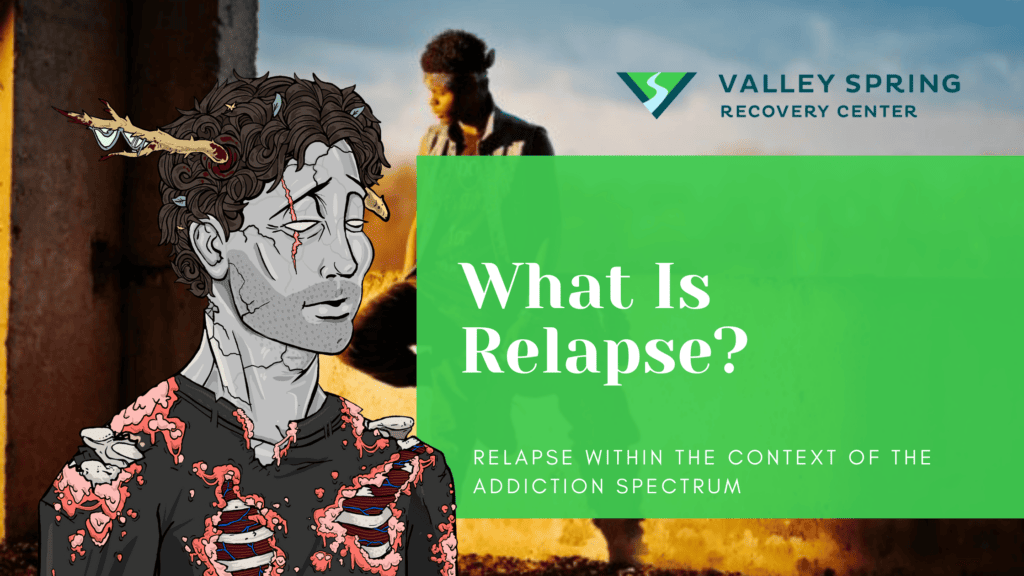Relapse is the process where a substance user returns to the habit after they have ceased engaging in it. According to a 2023 study by NIDA, titled Treatment and Recovery, about 60 percent of recovering addicts relapse. When dealing with a loved one who has relapsed, it is important to remember that addiction is a complex disease, and returning to substance abuse does not mean failure. Instead, it often signifies that additional support and intervention strategies are necessary.
Strategies for dealing with an addict who has relapsed include:
- Making the return to treatment easy: Making it easy for the relapsed addict to resume treatment is important as it helps to restart the rehabilitation program as soon as possible.
- Clear Communication: Keep communication channels open for your loved ones without being judgemental.
- Stop Enablement: To help the relapsed addict, you need to stop making excuses, and giving explanations about their continued substance use.
- Set and enforce boundaries: To protect yourself, and help your loved one face the reality of their relapse, you need to set and enforce boundaries.
- Prepare for crisis: You need to prepare for any eventuality as relapse comes with unique challenges and risks including overdosing.
1. Make Return To Treatment Easy
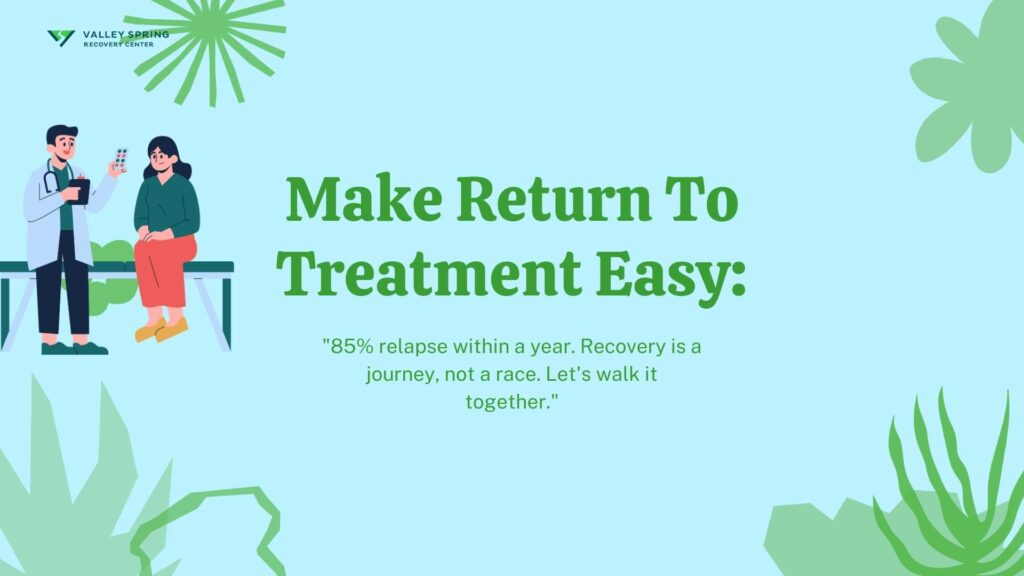
Make it easy for the relapsed addict to resume treatment as soon as possible to kickstart the journey to sobriety. Normally, parents, guardians, and caregivers of relapsing substance users often experience a cocktail of emotions over the recurring habit. These can range from anger, resentment, and hurt towards the addict. What they may not know is that the relapsed user is also struggling with their own set of emotions including frustration, shame, and anger over their inability to break the habit.
85 percent of individuals relapse within a year of treatment, according to the National Institute on Drug Abuse. Moreover, two-thirds of individuals return to drug use within weeks of beginning addiction treatment. Returning to treatment after relapse is common and necessary.
If the caregiver stops the search for a solution, the addict will feel abandoned. Therefore the caregiver must help the person to resume treatment easily. They can do this by actively seeking out information about various treatment programs and options, and presenting the information to the relapsed addict.
In addition, to show their support, the guardian can facilitate the return to rehabilitation by offering to take the person to the recovery facility or arrange transportation.
2. Clear Communication
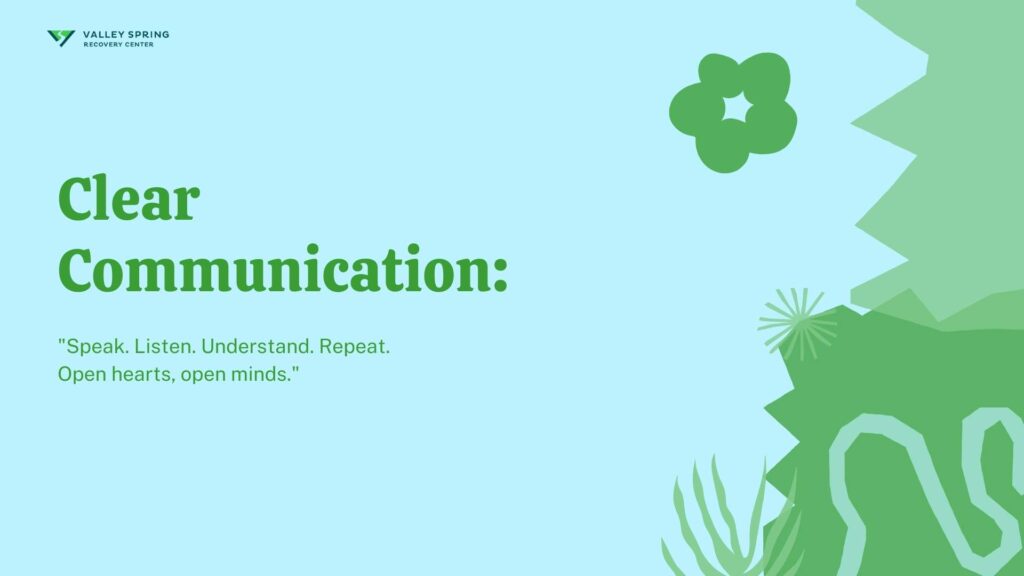
Clear communication plays a major role when dealing with a relapsed addict as ambiguity is likely to breed confusion. Since the addict already feels frustrated about their struggles with the substance use disorder, they do not need someone to add to their troubles.
Therefore, when communicating with the addict, you must approach them with a non-judgemental attitude and empathy. During your interaction with the relapsed addict, express your concerns about their continued use of the substance, and the effects the addiction is having on their life, as well as the lives of others. Encourage the person to share their thoughts, frustrations, concerns, and goals.
Without clear, open communication, the relapsed addict will feel isolated, and judged. As a result, they will lack a loved one to hold them responsible, and accountable for their actions.
When a loved one experiences a relapse, setting and enforcing consequences can increase the speed at which the addicted individual returns to treatment. During relapse, an addict becomes more concerned with obtaining and using drugs than the consequences of their actions. However, consistently reinforcing the consequences can deter the addict from buying and using drugs. Consequences are not meant to punish, but rather to maintain a healthy environment and encourage the individual to take responsibility for their actions and seek treatment.
3. Stop Enablement
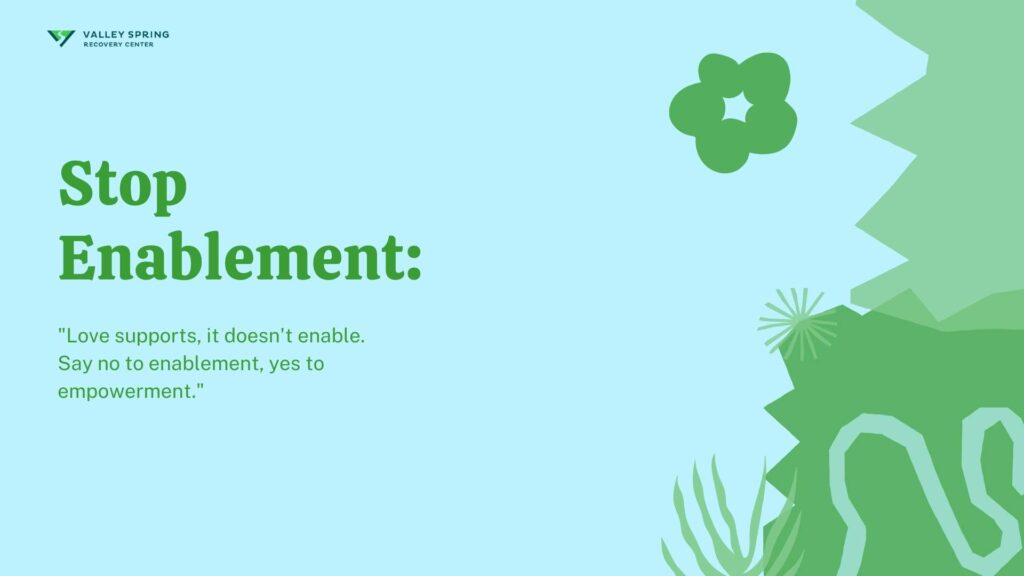
Enablement refers to actions or behaviors that perpetuate or support substance use and addiction. Enablement comes in many forms and guises. It may involve individual people such as friends and family members. In some instances, enablement takes the form of a societal norm.
To address the problem of relapsing addicts, it is critical to understand and deal with enablement behaviors effectively. To fail to address enablement is simply to encourage continued substance use and relapse.
Enabling behaviors include denial, justification, and emotional rescuing.
Denial
Denial involves expecting the substance abuser to act rationally or control their addictive habit. It also involves trying to excuse their behavior.
Justification
This involves agreeing with the reasons the substance user gives to explain their behavior such as saying that they engage in the behavior because they are stressed at home.
Emotional rescuing
Rescuing the person every time the substance user suffers from emotional problems due to the use of the substance normally prevents the relapsing individual from encountering the impact of their addictive habit.
Financial support without accountability
Substance users need money to finance their addictive habits. When you give out money without asking them to account for it, you encourage their return to substance use as they will freely use the resources to finance the habit.
4. Limit Contact
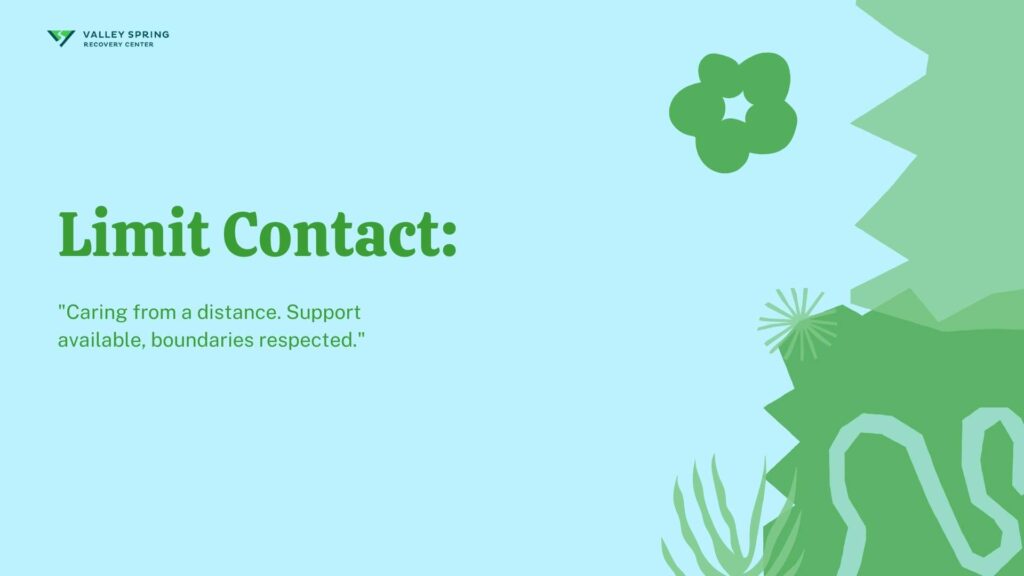
Limiting contact with a loved one who has relapsed is a major decision that involves considering personal boundaries while still extending empathy to them. Normally, when a loved one relapses, you feel frustrated and emotionally drained but it is critical to limit contact to safeguard your health, and general wellbeing. However, it is important to note that limiting contact does not mean cutting off communication with the relapsed addict. Rather you let the person know that your support for their recovery process is still available but you need to limit your interactions with them to protect yourself.
5. Set And Enforce Boundaries
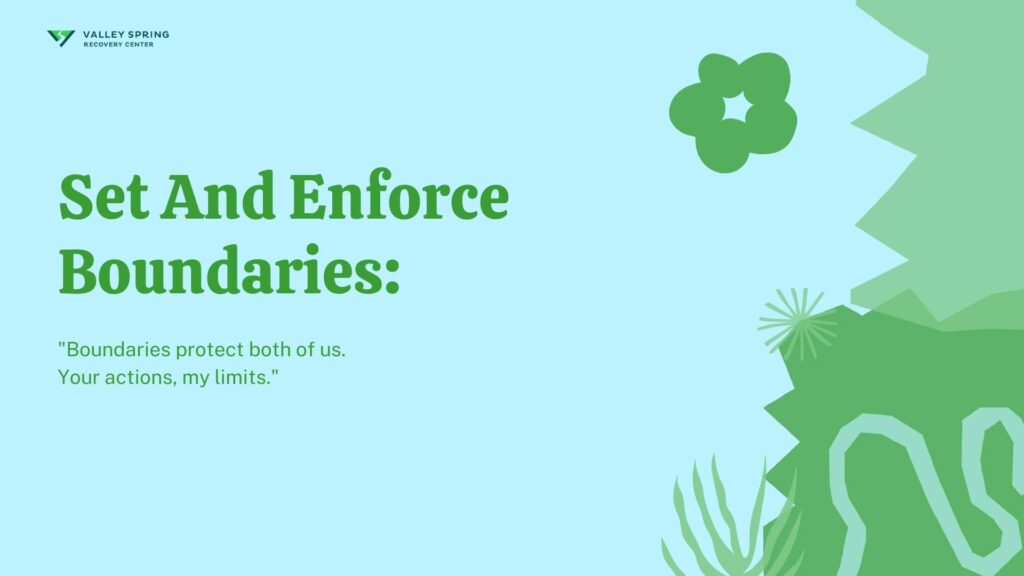
Setting and enforcing boundaries is important when dealing with a relapsed substance user for your well-being, and that of the substance user. In addition, it helps in maintaining healthy interactions.
Before setting the boundaries, clearly explain the behaviors you find unacceptable and what you expect of the person. In addition, make it clear that those boundaries are not to be violated, and that there will be consequences when they are crossed.
Without creating the boundaries, the relapsed substance user will not take responsibility for their actions or feel the need to break the habit. This is likely to negatively impact their journey to recovery as they will not feel the need to commit to rehabilitation.
6. Seek Professional Intervention
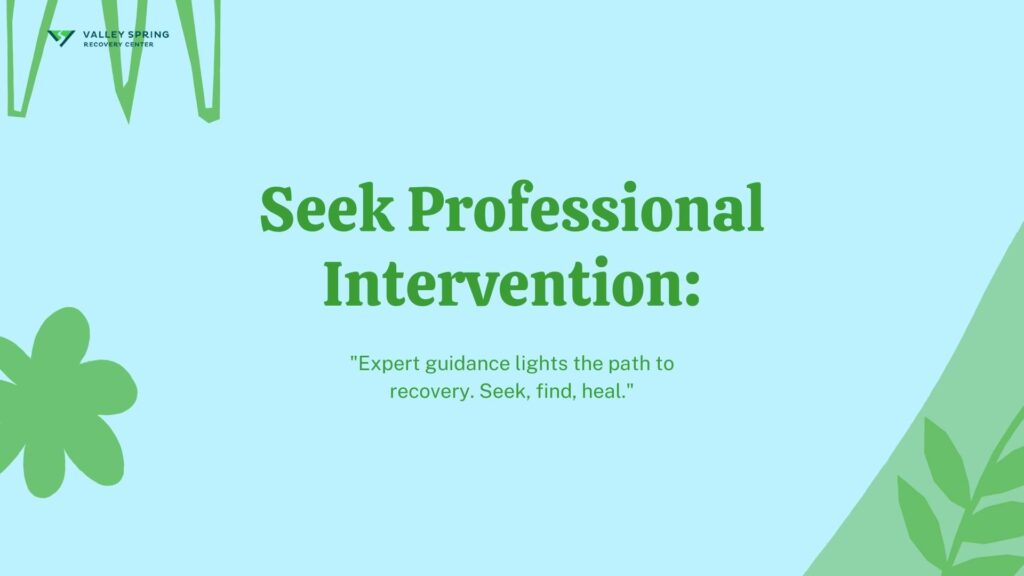
Addiction and relapse are complex issues that often require professional interventions. An addiction professional such as a licensed substance abuse counselor, social worker, psychiatrist, and psychologist will engage with your loved one to find out the underlying reasons for relapse. The professional will suggest the best course of treatment, and draw up a follow-up plan to help the recurring user beat their habit.
7. Prioritize Your Well-Being
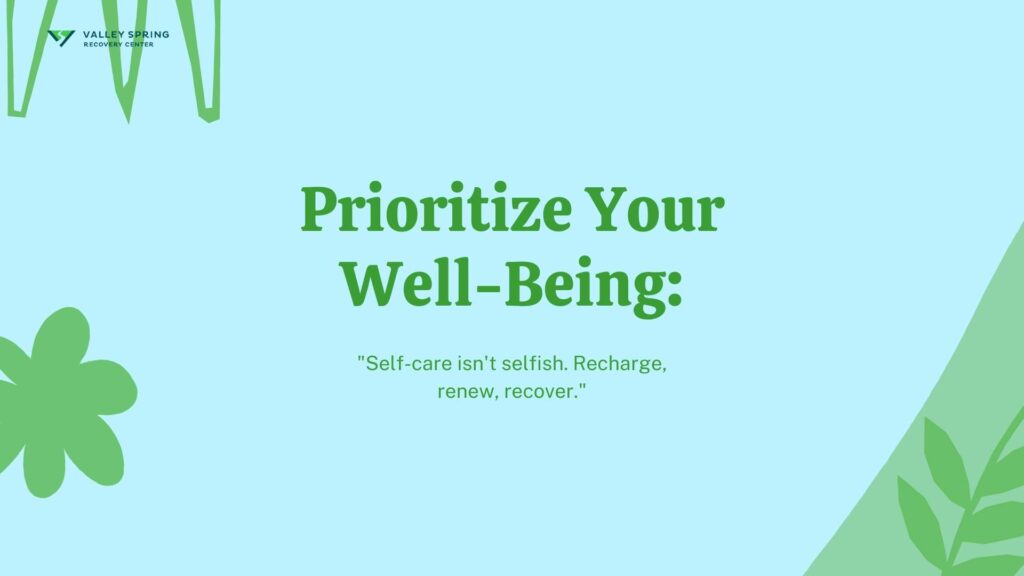
Dealing with a loved one who is an addict can take a toll on your general well-being. To protect yourself from burnout. It is important to seek emotional support and prioritize your well-being. Your social support system can include family members, your circle of friends, or just individuals who are also dealing with relapsed substance users.
8. Prepare For Emergencies
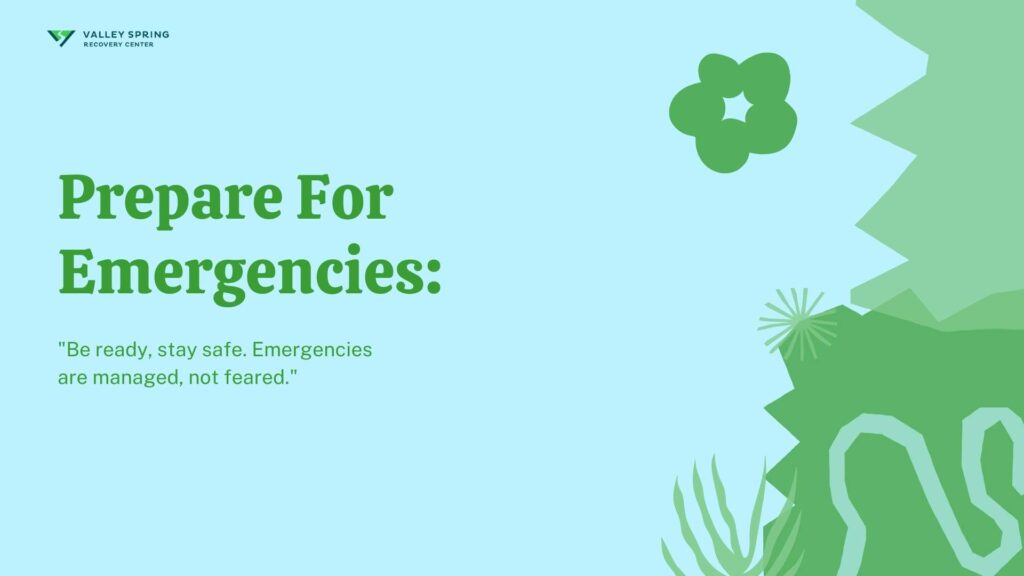
Relapse can pose a grave danger to people who have stayed off the substance for a long time. To deal with life-threatening situations, you need to have emergency numbers at your fingertips.
Opioid users who return to drug use are constantly at risk of overdose due to factors such as reduced tolerance, and laced drugs. A 2019 study by Columbia University Vagelos College of Physicians and Surgeons, titled Acute Care, Prescription Opioid Use, and Overdose Following Discontinuation of Long-Term Buprenorphine Treatment for Opioid Use Disorder, shows that more than 5% of opioid users treated with buprenorphine for 6-18 months needed medical intervention within 6 months after exiting treatment.
For parents, and caregivers dealing with a relapsed opioid user, it is important to have a naloxone kit at hand in case the overdose develops into a medical emergency. Naloxone, also known as Evzio or Narcan, is an FDA-approved drug that comes in as a nasal spray injection. It is an opioid antagonist aimed at reversing the effects of opioid overdoses in minutes, [NIDA 2022].
9. Educate Yourself on What Good Addiction Recovery Programs Look Like
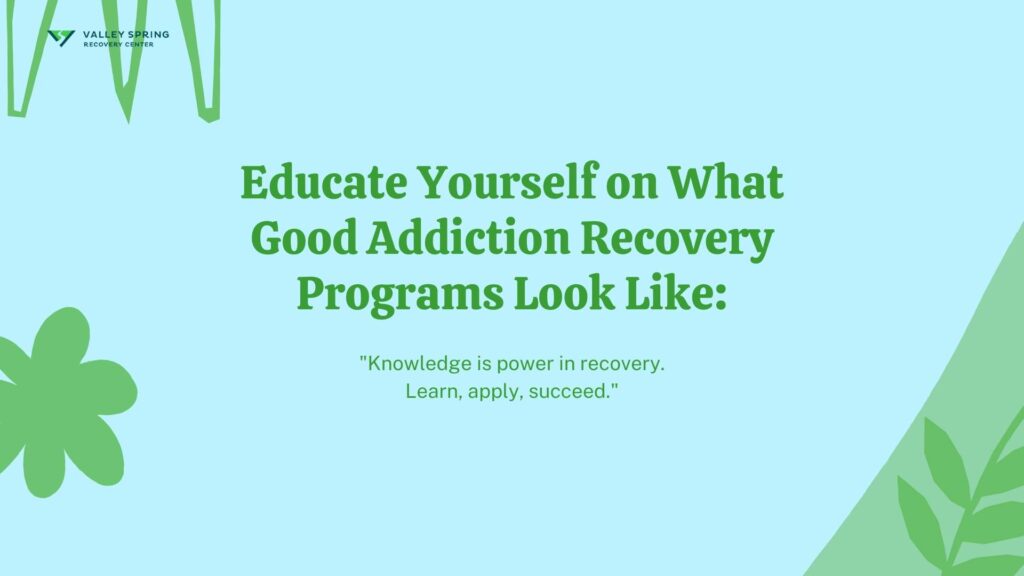
To help your loved one get out of addiction, and beat relapsing, you need to know what a good rehabilitation program looks like. Educating yourself on the recovery process helps you to monitor the addict, and know when they are making progress in their journey and when they are regressing.
Ideally, premier treatment programs have basic principles of care that include regular screening for substance use, customized plans for every addict, quick access to treatment, and long-term addiction management.
However, there are specialized treatment programs that offer holistic recovery, as well as programs for individuals with dual diagnosis mental health issues or trauma which require different specialized training and therapy.
10. Identify Triggers
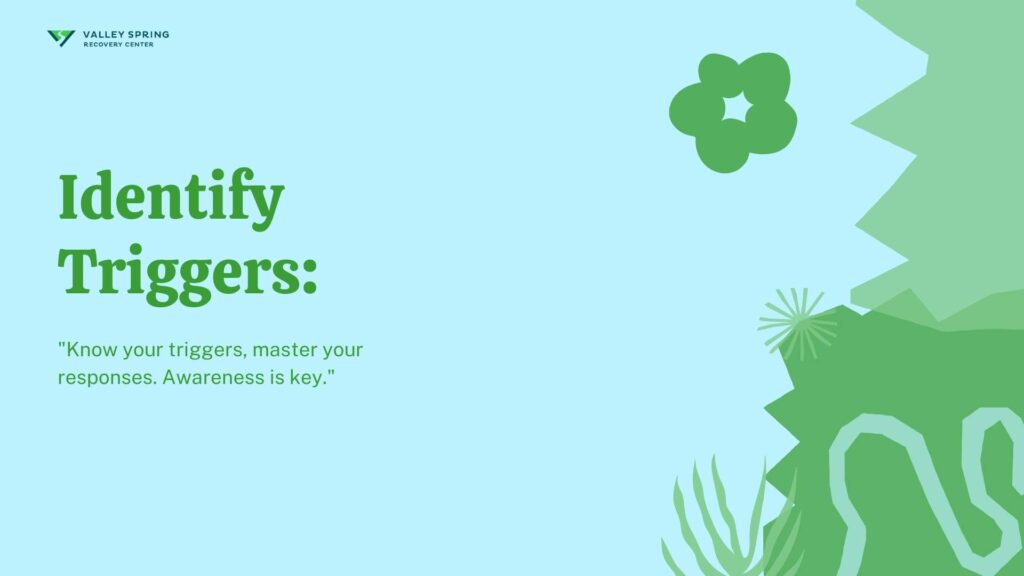
Work with your loved one to identify their triggers for substance use. Triggers can include stress, certain people or places, emotional distress, or even specific times of day. Once identified, develop strategies together to avoid or cope with these triggers effectively.
Behavioral, emotional and physical triggers can be overcome with the right prevention techniques and support.
11. Create a Support Network
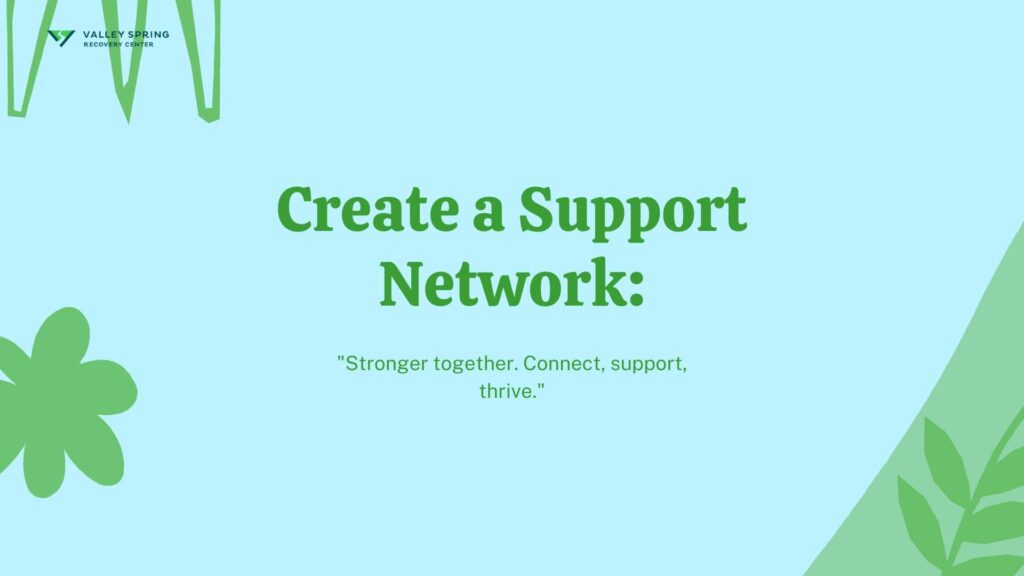
Surround yourself and your loved one with a supportive network of friends, family members, and professionals who understand addiction and can offer encouragement and guidance. Support groups such as Al-Anon or Nar-Anon can also provide invaluable support for the loved ones of individuals struggling with addiction. Suggesting for a loved one to return to Alcoholics Anonymous or Narcotics Anonymous can also be beneficial for them and provide another support network.
12. Monitor Medication Use
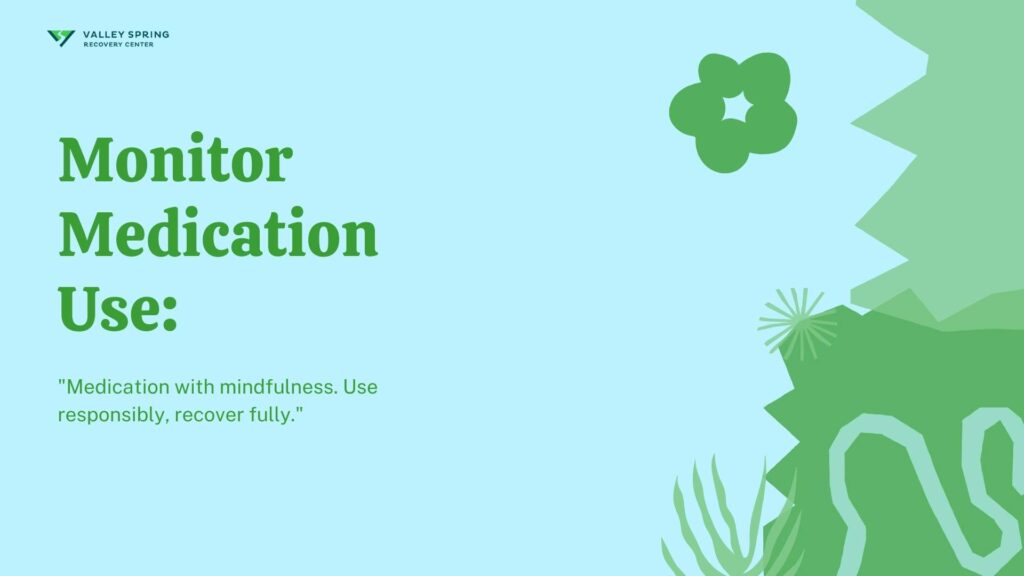
If your loved one is prescribed medication as part of their treatment plan, monitor their use closely to ensure compliance and prevent misuse. Education about the medication’s potential side effects and interactions is important to make sure prescription medication doesn’t become a crutch.
What are the first steps to take when a loved one relapses?
When a loved one lapses, you need to stay calm, prioritize safety, and keep hope alive for a full recovery.
1. Stay calm
When a loved one relapses, you will experience lots of emotions. However, it is important to keep calm and assess the situation carefully. Rather than see the relapse as a failure, look at it as a setback to be overcome.
2. Prioritize safety
Relapses that involve substances such as opioids come with the risk of overdose. Therefore, it is important to prioritize the safety of the person returning to drug use as you think about the next course of action.
3. Keep hope alive
Learning that your loved one has relapsed can break your heart, and make you feel like all is lost. However, you should never go that route as it will only make things worse. Instead, stay hopeful that the person is still capable of getting back to treatment, and making full recovery.
Should the approach to recovery change after a relapse?
Relapse often shows that it is time to reassess current, and previous treatment approaches. However, do not make any adjustments to the recovery process without involving the addict. Instead, discuss the changes you feel are appropriate with the rehabilitation management, and the addict, and explore all the options available. Changes to the recovery process may include medication, adjusting therapy, and exploring new addiction interventions.
Is it normal to feel frustrated or disappointed if a loved one relapses?
Feeling frustrated, and disappointed when a loved one like a child relapses is quite normal. Experiencing such feelings simply shows that you are normal since your expectations have not been met. However, you should not beat yourself up just because the person has relapsed. Remember you are not responsible for their relapse or recovery. That is their call to make, and they must put in the hard work of undergoing rehabilitation and maintaining sobriety.
What Are The Negative Effects Of Enablement?
Negative effects of enablement include delayed acknowledgment of the substance user’s problem and dependency on others.
Delayed Acknowledgment Of The Substance User’s Problem: Enabling actions normally shield the addict from acknowledging the depth of the substance use. Rather than experience the full extent of their habit, the addicts feel that their situation is not as bad as other people think it is. As a result, they may not see the need for rejoining and committing to the recovery process.
Dependency on others: While social support is critical for encouraging recovery, the motivation for sobriety should come from within the substance user. However, when there is constant enablement the relapsing user shifts the responsibility of helping them recover to other people. As a result, the individual ceases to lean on internal resources including resilience, and a personal drive to break the habit.
why do opiate overdoses occur at a higher rate after relapse?
Opiate overdoses occur at a higher rate after relapse primarily due to reduced tolerance. When individuals with opiate addiction abstain from use, their tolerance to the effects of opiates decreases over time. Upon relapsing, if they consume the same amount of opiates they used to take before achieving sobriety, their body may not be able to handle it, significantly increasing the risk of overdose. This reduction in tolerance and subsequent risk of overdose highlight the critical importance of a carefully managed approach to recovery and the necessity of overdose prevention strategies, such as education on the risks of relapse and the availability of naloxone, an opioid overdose reversal medication.
How can sober living and peer support prevent relapse before it happens?
Sober living homes and peer support programs are essential in preventing relapse and promoting long-term recovery from addiction. They provide a structured, drug-free environment that bridges the gap between intensive rehabilitation and normal life, offering crucial support and accountability. Residents benefit from shared experiences and coping strategies, which enhance their ability to manage daily stressors and triggers. This transitional housing not only supports gradual reintegration into society but also fosters routine and discipline, significantly increasing the likelihood of maintaining sobriety. According to a 2020 SAMHSA study, individuals in sober living environments are 20% less likely to relapse, highlighting the effectiveness of these supportive settings.
Kristy Ashe
All author postsShare This Post

